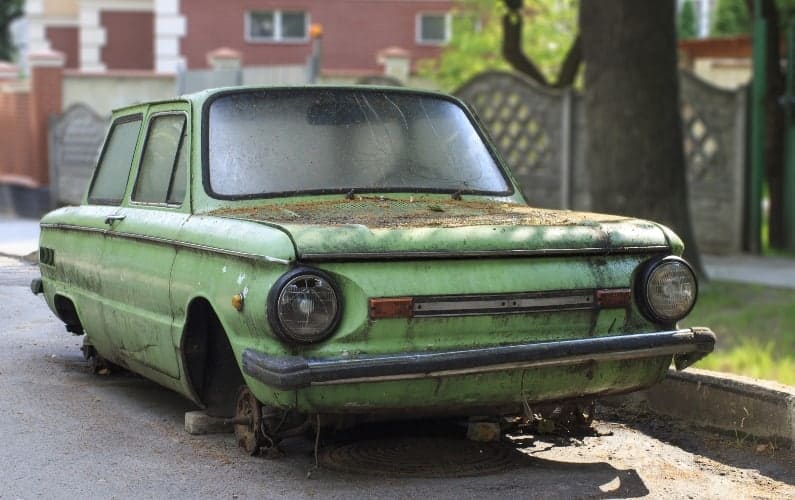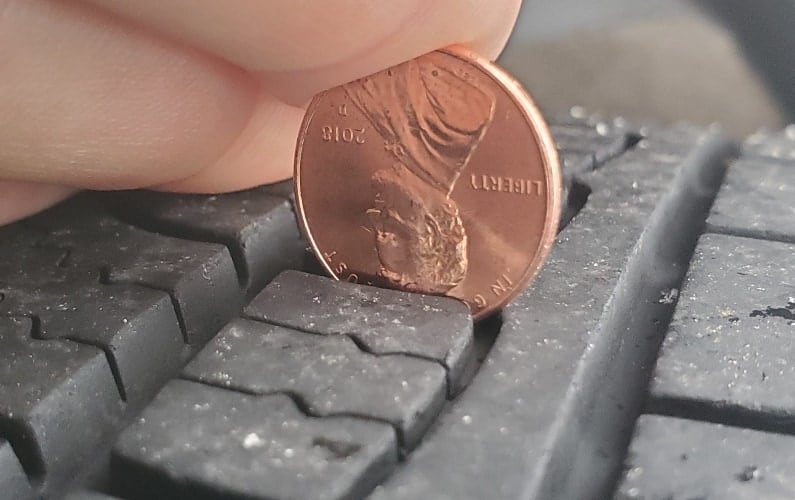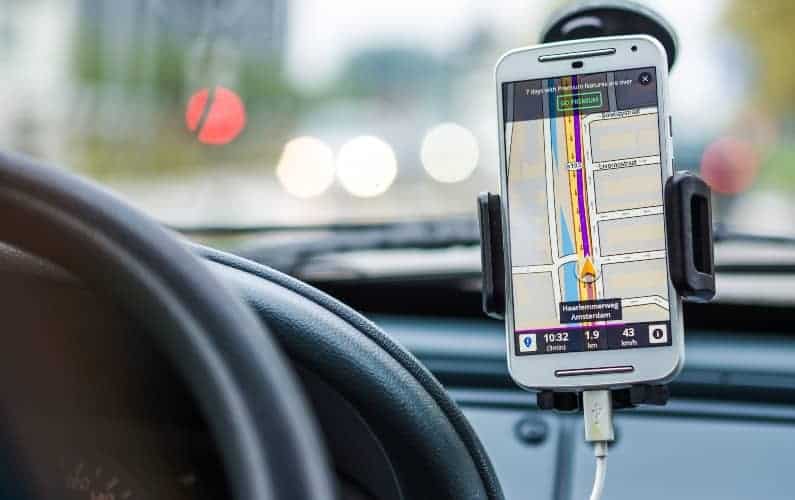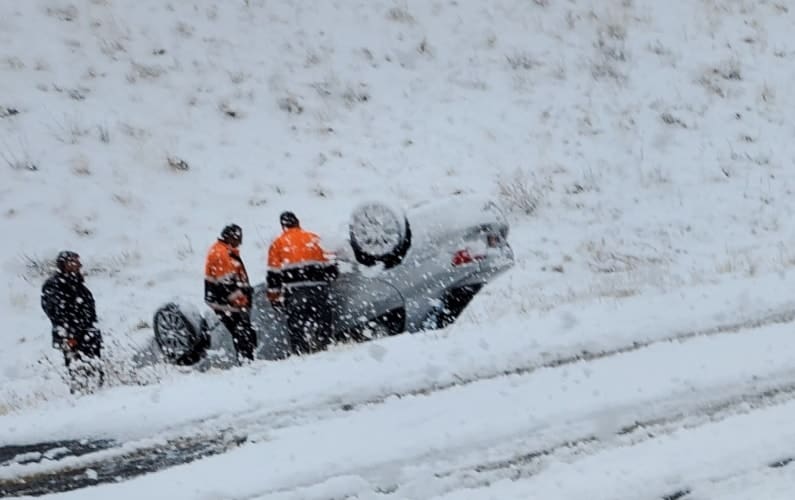With major holidays fast approaching, and winter weather rolling in alongside them, now is the time to spend a little time and intentionally prepare our vehicles for upcoming gatherings with friends and family.
Whether you will be traveling five miles or 5,000 miles, your first time examining your car should not be on a distant roadside in lousy weather as you dig for the tire changing kit you’ve never actually seen before!
When I served in the Marine Corps, it was routine practice to do a pre-trip inspection of vehicles before any weekend or holiday break when Marines were likely to be traveling any significant distance. Hard limits were established for how far we could go, and when we had to be back, and we had a checklist to follow before departing to ensure our vehicles would get us there (and back again)!
However far you might be traveling this holiday season, please take a moment to step outside, away from your devices and lay eyes on the machine that will carry you to your destination.
You can find an example of a checklist used by the Marine Corps here, and we won’t even make you get yourself a Platoon Sergeant to watch over your shoulder and sign you off!
- TIRES (4+1)
This is the spot where your rubber literally meets the road. As one of the most dangerous failure points during any vehicular travel, it is essential that you visually examine your tires prior to any trip. Some of the things you need to check for include: tread depth (use the penny test and make sure your tires have enough tread to at least bury Lincoln’s hair or ~1mm or more), wear and tear, weathering, uniform seating around the rim, any bulges, foreign objects (nails or other items stuck in the tire), and cuts or breaks – especially in the sidewall. Also, make sure you check your tire pressure and inflate them to the proper psi for your altitude and temperatures.
Front tires (Good or Bad?)
Back tires (Good or Bad?)
Spare tire (Good or Bad and inflated?)
Jack with all parts – There’s few feelings worse than going to change a tire and realizing, some part of the jack kit is missing, and you’re miles from any help. If you’ve never changed a tire, practice at least once before you ever attempt a trip!
- LIGHTS
Do you know what’s annoying? Suddenly realizing you can’t really see the road that well when one of your headlights goes out and then blinding someone else with your high beams just to get down the road. What’s worse? Getting a fix-it ticket from a cop who’s short on sympathy. Checking our lights now is the easy fix for this.
Headlights: High and Low beams good on both sides?
Taillights: Running lights function on both sides?
Brake lights: Light up on both sides when the brake pedal is pushed? – if you don’t have a helper, back up to something and see if both sides light up via your mirrors.
Turn signals: If your turn signals are separate from your hazards, activate them and then observe both the front and rear lights on each side independently.
Hazards: Many vehicles use the turn signals as well for the hazards, so be sure to activate your hazards and observe all four corners to see if they are working.
NOTE* Complete the Turn signal and Hazards checks separately as this will also allow you to identify wiring issues if something has gone faulty.
Back-up lights: Ensuring you have the parking or emergency brake engaged, and/or your foot firmly on the brake, place the car in reverse and check that your back-up lights on both sides light up.
License plate: Yes, there is supposed to be a light specifically illuminating your license plate to make it easier for law enforcement to see and run it. No, “I didn’t know” is not an acceptable defense, or at least it wasn’t when I got pulled over for this at 17. Make sure your headlights are turned on, and that your license plate light(s) do light up.
- WINDSHIELD/WINDOWS/WIPERS
The first rule of driving is, “If you can’t see it, you can’t deal with it.” Any component of your vehicle that involves vision (or protecting your vision) is automatically a critical component.
Windshield: Make sure it isn’t cracked, chipped, scratched, or broken, especially to where it would impair your vision. Some states allow cracks if they meet limitations, but those exceptions are state-specific, so read up if you have any issues with your windshield.
Rear window: Even with side-view mirrors, your back window needs to remain clear and unobstructed for the safest trip possible. Check for cracks, chips, scratches, or breaks that inhibit your view. If tinted, make sure it is a legal tint rating, both at your origin and destination.
Windows: Check to ensure functionality (they open and close), that they aren’t scratched or broken to impede your view, and if tinted, that the tint is legal at your origin and destination and light enough to see through.
Window controls: Whether manual or electric, make sure the controls work for your windows.
Windshield wipers: The other half of seeing through your windshield is keeping it clean. Even with full washer fluid, wipers with tattered edges or separations will not adequately clear water while you are driving, especially in heavy weather. Check for dry rot and damaged or missing wiper blades, and that they actually function. Do you know where the controls for them are? Know before you go.
- MIRRORS
I’m not an owl. Neither are you. While in the military, we learned to keep our head on a swivel, but even we relied on our mirrors for best visibility. You should too.
External sides: Check the left and right mirrors to ensure they are not missing, broken, or loose and adjust them so you can see through them comfortably in your natural driving position. Clean them if necessary.
Internal mirrors: Check the rearview mirror and any others (like that great spy mirror for the kids) to be sure they aren’t missing, broken, or loose, and that they are adjusted for easy viewing.
NOTE* The adjustment of mirrors, just like the seatbelt is unique to each driver, so anytime the driver changes, these should be re-checked.
- BUMPERS
While bumpers do serve the purpose of allowing you to bump into things and minimizing the damage if this occurs, they are not intended to be abused in this way and are actually a part of a larger safety system focused on YOU! If your bumpers do show signs of damage, you likely need a mechanic to determine if the damage extends to the vehicle frame and if the bumper is still adequate for safety purposes.
Front/Rear bumper: Is it missing, loose, broken, bent, or damaged in a way that risks safety?
- BRAKES
No matter how fast you can go, eventually you will run into a reason to stop, and brakes are what will make this happen – or not. If you encounter any of the following issues, put the brakes on your upcoming trip unless you get them fixed.
Brakes: Foot pedal must not travel more than half the distance to the floor, and your brake lights should not stay on after releasing the pedal. Also, note any warning lights for your ABS (antilock braking system) or “spongy” feelings while using your brakes that are abnormal. Check with a mechanic for any issues.
Emergency brake: If properly adjusted, check this by pushing or pulling the brake fully, apply your foot to the brake, then gently press the gas pedal slightly and verify that the brakes hold your vehicle in place. If not, you might need an adjustment or new brake pads.
- INTERIOR
There are several critical components inside your car that play significant roles, especially if you encounter a hazardous situation, or are traveling to particularly hot, cold, icy, or snowy climates.
Horn: Does it work. In traffic, this is often your only immediate method of signaling/communicating.
Defroster: This system warms your windshield and windows to aid in removing condensation and/or snow or ice. Turn on your defroster and verify that warm air blows out of vents onto the window surfaces. In the event you have a defroster button, also activate that and verify that it heats the electric lines on the back/side windows to remove any cold obstructions and verify wires are not cut/frayed.
Heater: Ensure that your heater works. While you can often cooldown by rolling the windows down, it’s much harder to heat up by rolling the windows up in a snowstorm.
Air Conditioning: If you are headed somewhere warm (Death Valley Hot), also check your A/C before departing. It’s always best to identify and correct issues before reaching a place that system becomes a critical need. Poorly performing A/C units may only need a recharge of freon which can be accomplished either by your service department or sometimes with a DIY kit.
Emergency Equipment: (Optional – sort of) Although the following items are optional, I have driven easily over a million miles and, at times, the items actually wound up being critical. Your personal mileage will vary, and the situation will dictate what you can and can’t bring based on space, distance, cost, and weight. I will start with the essentials, but progress to less critical items based on my personal opinion:
First Aid Kit – There is no reason you should not have at least a basic kit always.
High visibility vest – If an emergency requires you to leave the vehicle, BE SEEN!
Flashlight – Inexpensive and lets you see, be seen and signal if necessary.
Fire extinguisher – This one item can potentially save the complete loss of your vehicle.
Electric Hazard Triangle/Signal – Avoids fire risk and visible at night with many modes.
Tire jack, parts, & spare – If you didn’t check earlier, check for all parts now!
Blankets/Jackets/Sleeping Bags – Essential in cold weather emergencies.
Water – A gallon or two is cheap, compact, and the easiest lifesaver you can carry.
Mirror – This lets you signal, just like a flashlight, but in the daylight over distances!
Lighter/Matches/Flint and Steel – If you get stuck far out, have a way to make fire.
Shovel – All-purpose, useful for snow or digging if you get stuck.
Chains – If you don’t have snow tires, then have chains BEFORE needing them.
Tools – At a minimum: lug wrench, multitool w/screwdrivers, funnel, and vice grips.
Other – Include any additional items you find critical like an atlas, food, phone battery….
- SEATS/SEATBELTS
While I included this down here, it could be argued that this might be the single most important item on the whole list. Although your entire vehicle is designed to keep you safe and alive, failing to properly use safety equipment can result in you being ejected from your vehicle, or tossed around inside of it like a bad can of spray paint, ending your trip way sooner than you anticipated. Let’s avoid that, shall we?
Seatbelts – Check ALL seatbelts for missing parts, cuts or frayed belts, and functioning buckles.
Seats – If you didn’t know, seats are often removable, so ensure yours is securely bolted down and adjusted to your optimal driving position.
Car seats/Boosters – Make sure you properly locate and utilize the anchors in your car when installing booster or car seats, and follow all safety instructions regarding forward/rear facing configurations. It is almost never recommended to have your small child’s seat in the front passenger area beside you either. For further information, check here.
- LICENSE/DECALS/PROOF OF INSURANCE
Beyond the functional parts of your vehicle, remember to examine the compliance elements; things like your license, proof of insurance, current registration, and other regulatory considerations.
State Driver’s license: Make sure it isn’t expired, and the information (address) is current.
License Plate/Inspection Decals: Ensure current decals are on license plates – not in glove boxes.
Registration/Insurance: Keep current copies of registration and proof of insurance either in the glove box using a handy document binder, or have digital copies stored on your (fully charged) phone or device depending on your local laws.
- FLUIDS/UNDER THE HOOD/EXTRAS
An ounce of prevention is truly worth a hundred pounds of cure, as I can testify from having failed to do adequate checks in the past. Spare yourself a 13-mile hike like I took, and do some basic pre-trip checks.
Brake fluid reservoir – Ensure this is filled properly so your brakes can actually stop you.
Windshield washer fluid – If you can’t clean off your windshield to see, you won’t know what hit you. De-icer formula fluid can be especially useful in cold conditions.
Oil – Skimping on this one item is the surest way to kill your engine and destroy your entire vehicle. Check it and keep it full. Replace according to your manufacturer’s recommended schedule. If the engine is burning oil, or you notice a class 3 leak (oil drips and puddles below the vehicle), consult your mechanic.
Power steering – Unless you are a competitive bodybuilder and record-setter, make certain your reservoir is properly filled to avoid painfully difficult steering challenges.
Hoses – Check for cuts, cracks, leaks, bulges, chafing between hoses, dry rot, and deterioration so you can have the hose replaced before it blows on you mid-trip.
Belts – Visually inspect your belts for fraying, cracking, or slipping to spare yourself the embarrassment of getting towed as I did once overseas.
Locking lug nut key – Fun fact! In some locales, theft is more common and your vehicle might use “locking lug nuts” to prevent tire theft. These combine a key that fits into the lug wrench with one or two special lug nuts on your tires to make it more difficult to steal your tire – or change it if you were young, naïve, and out of state for your first semester of college 13 miles from town.
Battery – Make sure your terminals are clean, tight, secure to the battery itself, and free of any major corrosion or debris.
To Review
Taking the time to review these basic inspection items can mean the difference between arriving safely at your destination, and having to leave your vehicle behind in a wrecker lot, or worse, a trip for you or others to the hospital or morgue.
As these holidays fall upon us, and we get sucked back into our devices and connections, we should each be thankful that we took this time beforehand to ensure we could reach our destinations together.
Can you think of anything I missed, or do you have a special story about a trip where one of these inspections could have spared you grief? Please let us know in the comments below.
And don’t forget to subscribe with your email below to get the latest notifications for ways to increase your productivity, improve your offline life, and remember to digitize deliberately!
All my best.
Digital Dave
Digital Dave
Latest posts by Digital Dave (see all)
- Have You Done Your Daily EMAIL 15 - April 25, 2020
- It’s Time to ITEMISE Your Online Content - April 10, 2020
- Digitizing Deliberately - December 18, 2019




